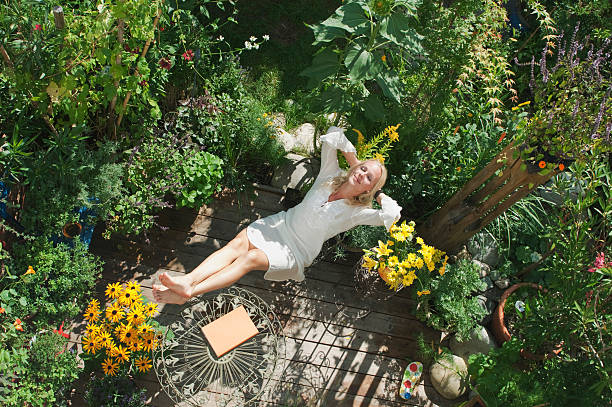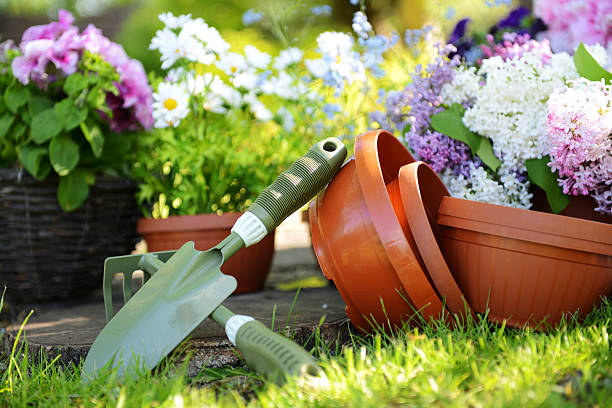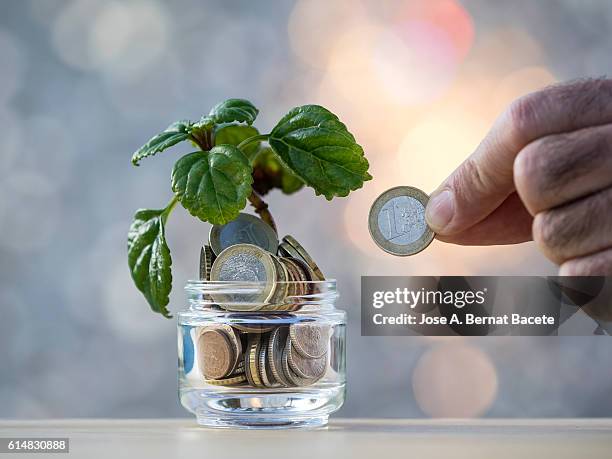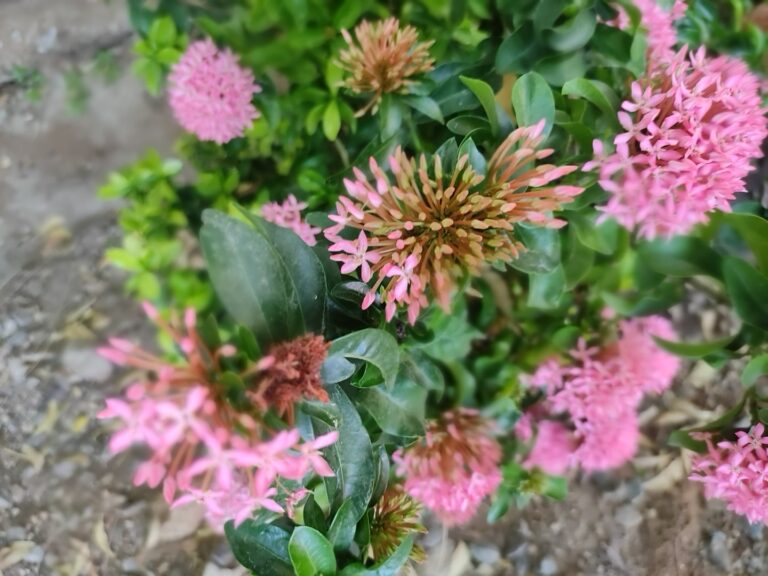“Container gardening in India’s tropical summer isn’t easy—scorching sunlight, heatwaves, and dry winds can test even experienced gardeners. Here’s how I protect my potted plants from summer heat stress without overspending.”
India is a tropical heat region, with most days covered in intense sunlight and frequent heatwaves. But summer brings extreme heat stress that challenges even us humans—and just imagine the struggle of a poor potted plant.
In container gardening, root space is limited, which means moisture, nutrients, and aeration (airflow in the potting mix) are also restricted. This isn’t really a drawback—because of their compact design, potted plants are perfect for balconies, terraces, and small spaces.
However, to survive Indian summer heatwaves, container plants need planned care and preventive steps. The combination of scorching temperatures, hot winds, and fast-drying soil can quickly damage roots if ignored.
The good news? You don’t need complicated or costly methods. With some customized summer plant care—like choosing the right pots, improving potting mix aeration, and adjusting your watering routine—you can help your plants thrive.
Let’s dive into what actually works and how you can protect your plant babies in Indian summers without making container gardening stressful.
How I Managed Summer Heat Stress in Container Gardening (7 Years of Real Lessons)

My personal struggle with container gardening in hot summers
When I first started container gardening, things felt much easier. For one, I had very few plants—so watering and caring for them didn’t overwhelm me. The second reason was that most of my early plants were native varieties, naturally adapted to my local tropical climate and heat.
The third and perhaps most important reason was pot material. In those early days, I mostly used concrete pots and terracotta pots. These porous materials allowed excess water to dry quickly, and terracotta in particular helped regulate soil temperature, keeping roots comfortable even when outdoor temperatures fluctuated.
Things changed a lot when I switched to plastic pots. Around 2019, I toppled many of my old pots and decided to replace them with plastic ones because they were lighter and more affordable—especially since I had also gone overboard with buying new plants in large quantities.
While plastic pots are budget-friendly, they come with drawbacks: they heat up quickly under direct sunlight and their non-porous material can trap excess moisture. Over time, I figured out simple fixes for these problems (I’ll share those later in this blog, so keep reading).
Myths About Pots and Summer Heat
There are plenty of myths around container gardening in summer. Many believe that self-watering pots, expensive pot materials, or fancy watering tools will magically solve heat stress. The truth? Managing summer gardening challenges comes only with hands-on experience—at least two growing seasons of trial and error.
In my 7+ years of gardening, I’ve tested countless products. Most of the so-called “must-haves” didn’t work nearly as well as promised. The key is to select gardening tools and pots based on your actual garden needs and budget.
Remember, container gardening is a long game. Once you learn and succeed with a few plants, curiosity will push you to add more. And as your plant collection grows, expensive “fancy tools” become unnecessary expenses. If you truly want to invest, go for basic quality tools and buy healthy plants from reputable sources.
My Summer Survival Strategy (Simple but Effective)
After years of trial and error, I’ve learned that survival in the Indian summer heat is about tailoring methods to my terrace garden setup rather than copying textbook solutions. Here’s what worked for me:
- Moving pots to spots with less intense sunlight during peak hours.
- Using a well-draining soil mix with cocopeat, compost, and perlite to prevent root rot.
- Improving drainage in plastic pots by drilling extra holes or adding coconut husk chips at the bottom.
- Choosing heat-tolerant plants that adapt naturally to tropical conditions.
- Never watering without testing soil moisture first—and preferring deep watering over frequent shallow watering.
- Maintaining a ventilated garden space to improve airflow and reduce fungal issues.
- Using proper pot sizes so roots have enough room.
- Regular pruning to reduce stress and encourage healthy growth.
- Focusing on keeping plants healthy and functional, rather than chasing Instagram-perfect aesthetics.
My promise: these are actionable tips from real experience, not textbook advice.
Why Summer Heat Is Tough on Container Plants

You might notice that ground bed plants survive tough weather conditions better than container plants. But here’s the catch—you can’t compare a tree or shrub with massive roots in open soil to a potted plant that only has limited root space. Yet, these little wonders still manage to give us greenery, flowers, and even food crops in small spaces.
The beauty of container gardening is simple: you don’t need land. You create a mini soil ecosystem inside a pot, and with thoughtful placement, you can even build a microclimate for balcony or terrace plants. But here’s the first rule: don’t apply your ground bed gardening knowledge directly to container plants. Instead, customize care based on pot material, your local climate, plant type, and garden space. Do this, and you’ll have fewer struggles maintaining a healthy garden year-round.
Why Summer Is Especially Hard on Potted Plants
The main reason summer is tough on container plants is limited soil volume. Pots dry out much faster than ground soil. If you are underwater in summer, plants show heat stress symptoms—wilting, leaf burn, or stunted growth. Keep underwatering, and your plants become more vulnerable to pests and fungal diseases.
Please don’t assume that “a bigger pot with more soil” is the solution. That’s actually a recipe for disaster. Instead, focus on soil health and potting mix quality for summer gardening.
- Always use a well-draining potting mix with cocopeat, compost, and perlite.
- If using garden soil, make sure it’s sterilized—and never use it alone.
- Add mulch on the top layer to lock in moisture and regulate temperature.
- Tailor mixes to each plant type, especially for heat-tolerant container plants.
And don’t fall for “magical soil potions” or expensive branded mixes. A little research and some DIY soil recipes work just as well.
Pots Heat Up, Stressing Roots
Now let’s talk about pot materials. Terracotta and concrete pots are porous—they breathe, drain excess moisture, and stay relatively cool. That’s why many gardeners recommend them.
But here’s the reality: not every gardener can afford or physically manage heavy terracotta pots—especially solo balcony gardeners with dozens of plants. That’s why I switched to plastic pots. They’re affordable, lightweight, and easy to move. Yes, they heat up faster and trap moisture—but with a few adjustments, they can work just fine.
If you’re using non-porous pots (plastic, resin, or metal), here are my tried-and-tested fixes:
- Drill extra drainage holes for aeration.
- Add a drainage layer (coconut husk chips) at the bottom.
- Use a well-draining soil mix and practice deep watering instead of shallow watering.
- Do the finger test before watering—don’t let soil go bone dry.
- Pick UV-protected plastic pots and move them to less intense sun spots during peak hours.
- Use shade nets or old cloth curtains to reduce direct heat.
- Place a bottom tray under pots—the little water left acts as a mini humidifier on hot days.
- Keep your garden well-ventilated to reduce root stress.
Myth-Busting: Bigger Pots Don’t Solve Heat Stress
One of the biggest myths I’ve seen in summer gardening is: “Use bigger pots to prevent heat stress.”
Here’s why that doesn’t work:
- Bigger pots = more soil, which holds excess water.
- Excess water = clogged air pockets → roots suffocate.
- High moisture + summer heat = fungal infections.
- And regardless of size, non-porous pots still heat up under direct sun.
The sweet spot is choosing pots just 2 inches bigger than the root ball and, whenever possible, opting for porous materials like terracotta, fabric grow bags, or coir pots. That’s how you prevent heat stress without overspending.
My Budget-Friendly Strategies to Reduce Heat Stress

The secret of a functional and healthy container garden in summer isn’t found in fancy setups or expensive tools. It lies in following basic container gardening care and customizing your summer routine based on your local climate and garden space.
Your local climate and temperature range help you decide which plants can adapt best. For example, knowing the maximum summer heat and minimum winter dips lets you plan better for year-round plant survival.
Your garden space also plays a huge role — sunlight hours, intensity, ventilation, and available space all decide what type of containers and plants will thrive. Once you understand your garden’s microclimate, you’ll avoid unnecessary expenses and keep things budget-friendly.
🌿 Ever wondered how terrace gardeners keep their plants dust-free in Indian cities? Find out my easy cleaning tricks that actually work!
Choosing the Right Containers (Material & Size Matters)


Container choice is often overlooked, but it plays a key role in plant survival during extreme summer heat. Both pot material and pot size affect watering, aeration, and root temperature.
- Porous containers (clay pots, fabric grow bags, coir pots) allow natural aeration and reduce the risk of overwatering or heat stress if combined with the right potting mix.
- Non-porous containers (plastic, metal, resin) heat up faster and trap moisture, but with a few DIY fixes like added drainage holes or layering, you can still make them work.
Size tip: Small pots dry out too quickly in summer, leading to underwatering. Large pots hold excess water and reduce aeration, risking root rot. The best choice? Pick a pot just 2 inches larger than the root ball and repot gradually as your plant grows.
Clay vs. Plastic vs. Grow Bags – What Worked for Me
Over the years, I’ve experimented with all three — and each has its pros and cons.
Clay Pots
Clay or terracotta pots are the gold standard for summer container gardening. They breathe naturally, regulate root temperature, and reduce stress during heatwaves. Downsides: they’re heavy, breakable, and not always widely available. In my east- and south-facing spaces, I keep them shaded with bamboo mats instead of moving them around — a more practical solution.
Plastic Pots
Plastic pots dominate my terrace garden because they’re lightweight, affordable, and easy to find online in all shapes and sizes. Their cons? Non-porous, they heat up fast in summer, and prolonged sun exposure makes them brittle. I solved this by adding extra drainage holes and occasionally double-potting (placing a plastic pot inside a slightly larger one to reduce direct sun impact).
Grow Bags
Grow bags come in two types:
- Fabric grow bags (porous, cooler in summer, affordable for leafy greens and annuals).
- Plastic grow bags (cheaper but act like regular plastic pots).
Grow bags are ideal for short-term or seasonal gardening (like edible plants or annual flowers) but they’re not very sturdy. Pets or strong winds can topple them, and most wear out after 1–2 seasons.
Myth: Black Plastic Pots = Always Best (Debunked)
Many assume black pots are ideal, but in reality, dark colors absorb more heat and can overheat the roots. Lighter-colored containers (white, cream, or pastel grow bags) stay cooler in harsh sunlight and are a smarter choice for summer gardening.
Potting Mix That Stays Cool & Moist Longer
Ready to unlock expert secrets on creating the perfect potting mix from 7 years of hands-on experience?

If you’re gardening in pots, the soil dries out twice as fast in summer. That’s why choosing the right cheap potting mix for summer container gardening is more important than buying fancy plants.
Here’s the mix that has never failed me:
- Cocopeat → keeps moisture locked in without clogging roots.
- Compost → feeds the plants slowly, without “burning” them.
- Perlite (or coarse sand if you’re on a budget) → adds air pockets so the roots can breathe.
The big lesson I learned: don’t chase moisture retention so much that you forget drainage. If the mix holds water like a sponge, your roots suffocate. But if it drains too fast, plants wilt in hours. The trick is balancing drainage with moisture retention—and that balance is the secret to summer survival in pots.
DIY Mulching Tricks That Saved My Plants
People think mulch = expensive bark chips or store-bought products. Nope. That’s a myth. The truth? Homemade mulch ideas for container plants in summer work just as well—and often better.
Here are my go-to mulches that cost zero:
- Grass clippings (thin layer only, or it stinks).
- Dried leaves (nature’s free blanket).
- Shredded cardboard (great insulator, but don’t overdo it).
Each of these creates a little shield on top of the soil, cutting evaporation by half and keeping the root zone cool. Mulch doesn’t need to be fancy. It just needs to stop the summer sun from baking your soil.
Smart Watering Routine for Scorching Days
Want to master the art of watering your containers with ease?

One of the most common questions I get is: how often to water container plants in summer? Well, the answer is not “twice a day” or “every morning.” It depends on your pot, soil, and plant type. But here’s what worked for me after many failures:
- Morning watering wins: Plants absorb better before the heat builds up.
- Evening watering risks: Leaves and soil stay wet overnight, welcoming fungal disease.
- Deep watering myth: People say “water deeply once a week.” Honestly? In pots, that’s a recipe for root rot. Instead, I water deeply but in smaller doses whenever the top inch of soil is dry.
Lesson learned from my own mistakes: overwatering kills faster than underwatering in pots. Once you suffocate the roots, there’s no turning back. Finger-test the soil, then water. Don’t let schedules fool you.
Using Shade & Microclimates (Without Fancy Gear)
You don’t need greenhouse nets, fancy structures, or pricey gadgets to protect plants from heat. Creating budget-friendly shade for balcony plants is simpler than it sounds.
Here’s what I’ve used for years:
- Old curtains: Light, breathable, and free.
- Bamboo mats: Block harsh sunlight but let air flow.
- Natural windbreaks: Taller plants shielding smaller, sensitive ones.
The myth that “only greenhouse shade nets work” is just marketing talk. Shade is shade—whether it’s a pricey UV cloth or your grandma’s old sari hanging over your balcony rail. And when you arrange plants cleverly—tall ones at the back, shade-lovers tucked behind—you’ve basically built a microclimate without spending a dime.
Plants That Thrived (and Failed) in My Hot-Summer Garden

I’ve lost more plants than I currently grow — and that’s not a shame. That’s part of the learning process in every gardening journey. Sometimes you don’t know the right care, or sometimes you overdo it.
Even experienced gardeners lose plants. Despite years of practice, certain factors go unnoticed or can’t be controlled. That’s how most of us learn — by trial, error, and a little heartbreak.
In my case, I’ve had plenty of these “learning-through-loss” moments. Back in my early container gardening days, I didn’t realize plastic pots need extra drainage and airflow. I found out the hard way after losing a collection of chrysanthemums to root rot. Since then, I’ve rarely repeated the same mistake — every plant loss taught me something.
But let me remind you: it’s not always your fault. External factors like sudden heat waves, soaring temperatures, or hot dry winds can damage plants no matter how carefully you water or fertilize them.
That’s why it’s important to choose plants that match your dominant climate conditions. For me, living in tropical South India, my summers are hot and dry. The only way to reduce losses was to shift towards heat-tolerant and drought-resistant plants for my terrace garden.
Because the truth is: not every plant can adapt. And that’s why the myth — “Any plant can grow in a pot if you give care” — needs to be debunked. Care matters, but climate adaptability matters more.
My List of Heat-Tolerant Plants That Survived Summer Heat
- Bougainvillea
- Thrives in full sun, minimal water once established.
- Tolerates up to 45°C.
- Care tip: Train on railing or wall, avoid overwatering.
- Portulaca (Moss Rose)
- Loves direct sunlight, drought-hardy succulent.
- Tolerates 42–44°C.
- Care tip: Use sandy, well-draining soil.
- Adenium (Desert Rose)
- Perfect for containers in hot, dry climates.
- Tolerates 40–45°C.
- Care tip: Needs very well-draining mix (cocopeat + sand + perlite).
- Hibiscus
- Heat-friendly flowering shrub.
- Tolerates 38–42°C.
- Care tip: Deep watering 2–3 times a week, regular pruning.
- Ixora
- Tropical shrub that thrives in humid + hot climates.
- Tolerates 40°C.
- Care tip: Needs acidic soil (mix compost + cocopeat).
- Crown of Thorns (Euphorbia milii)
- Hardy succulent, blooms year-round.
- Tolerates 42–45°C.
- Care tip: Avoid overwatering; full sun is best.
- Lantana
- Strong landscape plants bloom nonstop in summer.
- Tolerates 40–42°C.
- Care tip: Trim regularly to encourage more flowers.
- Plumeria (Frangipani)
- Iconic tropical tree/shrub for containers.
- Tolerates 45°C.
- Care tip: Loves neglect, requires free-draining mix.
- Jatropha
- Tough drought-tolerant shrub.
- Tolerates 42–45°C.
- Care tip: Minimal care once established.
- Daylilies
- Flowering perennials that withstand harsh summers.
- Tolerates 38–42°C.
- Care tip: Deep watering once a week, mulch soil to stay cool.
Lesson Learned
Plant survival isn’t about expensive soil mixes or fancy pots — it’s about matching plant genetics to your climate. Once I started selecting plants based on my local summer extremes, my garden became healthier, and my losses reduced drastically.
Common Mistakes I Made (So You Don’t Have To)
When I look back at my early container gardening mistakes, most of them came from excitement and lack of patience. If you’re just starting out, you don’t have to repeat the same blunders I did. Here’s what I learned the hard way:
1. Overwatering & Root Rot
Want to master the art of watering your containers with ease?

This is the number one killer of potted plants in summer. I assumed watering every day (sometimes twice a day!) meant healthy plants. The truth? Roots need oxygen as much as they need water. Constantly soggy soil suffocates roots and invites fungal infections.
Lesson: Always do the finger test before watering. Water deeply but less frequently so roots grow stronger and can handle heat waves.
2. Choosing the Wrong-Sized Pots
In the beginning, I thought bigger pots meant healthier plants. Wrong! Large pots hold excess water → which leads to root rot. On the other side, tiny pots dry out in hours under the summer sun.
Lesson: Stick to the golden rule: pick a pot 2 inches bigger than the root ball and size up gradually as the plant grows. That balance prevents both underwatering and overwatering issues.
3. Not Adjusting My Fertilizing Schedule
I used to feed plants with a strict calendar schedule, thinking more fertilizer = faster growth. But plants don’t eat like humans on a fixed timetable. In hot summers, overfertilizing burns roots and stresses plants already struggling with heat.
Lesson: Fertilize less frequently in summer, and always dilute liquid fertilizers. Use organic fertilizers like seaweed extract or compost tea to reduce stress and support resilience.
4. Believing “Instagram-Perfect Plant Hacks”
This one stings. I followed a lot of “miracle hacks” I saw online — from ice cubes in pots to magic soil potions. Most of them either did nothing or actually harmed my plants.
Lesson: Container gardening isn’t about hacks, it’s about consistency and observation. Instead of chasing viral trends, focus on what your plants are showing you. Your garden is the best teacher.
Seasonal & Local Tips (For Indian Summers)
One of the most important lessons I’ve learned is this: gardening is always local. What works for someone in Europe or the U.S. might not work for me here in South India. If you’re wondering how to protect balcony plants in Indian summer, the real answer lies in understanding your own region’s climate and tailoring your care routine around it.
Timing Watering for Regional Humidity
In peak summer, humidity levels can change everything. For example, in coastal Tamil Nadu, evenings stay humid, which means watering late at night can leave pots soggy and invite fungal infections. But in drier inland regions, evening watering actually helps plants stay cool overnight.
Lesson: Observe your region’s humidity. In most Indian cities, early morning watering is best because it hydrates plants before the sun gets harsh. If humidity is low, add an extra light watering in the evening — but avoid leaving pots wet overnight in high-humidity areas.
Choosing Region-Friendly Varieties
One of the biggest shifts in my container gardening success came when I switched to heat-tolerant, region-friendly plants. Instead of struggling with imported hybrids, I started growing plants like hibiscus, portulaca, and curry leaves that naturally thrive in tropical heat. These plants are resilient, bounce back faster after heat stress, and require less pampering.
Lesson: Always look at your local maximum summer temperatures before buying plants. Pick varieties proven to survive your region’s climate — not just plants that look pretty on a catalog.
Myth: Imported Seeds = Better Results
When I first started gardening, I fell for this myth. Fancy seed packets with foreign labels looked so tempting. But many of them either failed to germinate or withered away in the first heatwave. The truth? Imported seeds are often bred for climates totally different from ours.
Lesson: Don’t waste money chasing foreign varieties. Local nurseries and agri shops stock seeds that are tested for Indian conditions. Native plants and desi vegetable seeds not only adapt better but also give you a higher yield with less stress.
FAQ: Summer Heat & Container Gardening in India
🌡️ Can container plants survive 40°C summer heat?
Yes, but only with the right care. Many heat-tolerant container plants in India (like hibiscus, portulaca, and curry leaves) can handle 40°C if you give them well-draining soil, morning watering, and partial shade during peak hours. Avoid black plastic pots since they heat up faster.
💧 How do I keep potted plants cool without spending much?
You don’t need fancy gear! Simple tricks like using homemade mulch (dried leaves, shredded cardboard, or coco husk), placing pots in groups to create a microclimate, and moving them to a ventilated, shaded balcony corner can drastically reduce heat stress.
🏠 Should I move my plants indoors during heatwaves?
Not all plants benefit from being indoors. Many balcony plants for Indian summer still need 4–6 hours of light. Instead of moving everything inside, use shade nets, old curtains, or bamboo mats outdoors to reduce harsh sun while maintaining airflow. Move only delicate plants like ferns indoors temporarily.
🌿 Which balcony plants are best for summer in India?
Some of the best balcony plants for Indian summer heat are hibiscus, jasmine, curry leaves, money plant, portulaca, aloe vera, and coleus. These are heat-tolerant plants for containers that can handle hot weather with minimal fuss.
Final Thoughts
Gardening isn’t about perfection—it’s about patience, small wins, and the lessons you pick up along the way. Every wilted leaf or pest problem is just part of the learning curve that makes you a better gardener over time.
🌱 I’d love to hear from you! Share your summer gardening struggles, clever hacks, or little victories in the comments—I might pick up a new tip from you too.
👉 Keep exploring:

Pingback: Top 3 Essentials for Container Gardening Success: Sunlight, Space & Drainage Explained
Pingback: 4 Years of Blooming Joy: My Powerful Journey with Potted Flowers